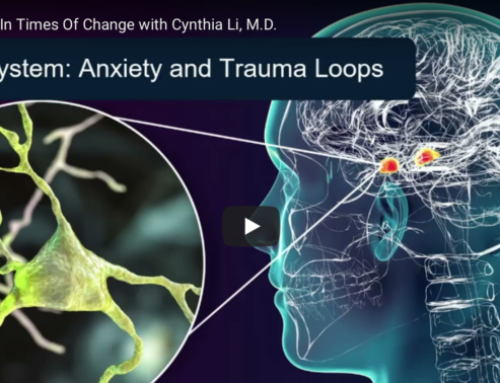“Healthy aging” may seem like an oxymoron to most. Nowadays, old age is deemed to be a medical condition. But chronological age is the incorrect focus; rather, it is the overwhelming prevalence of chronic degenerative diseases that is the medical condition, and this has now been equated with older age.
Age stereotypes begin at a young age. Dr. Becca Levy, social gerontologist and psychologist at Yale, has numerous publications on implicit ageism— “the thoughts, feelings, and behaviors toward elderly people that exist and operate without conscious awareness or control, with the assumption that it forms the basis of most interactions with older individuals.” She notes that most implicit ageism is negative. She describes the process of how a reflected stereotype becomes incorporated into self-stereotypes:
1. Age stereotypes are internalized from the host culture at a young age.
2. At some point these age stereotypes become “self stereotypes” about oneself as an aging individual.
3. These self-stereotypes are then consciously and unconsciously activated to exert their effects on individual health.
In a time when chronic degenerative diseases like diabetes, obesity, bowel dysfunction, etc., are exploding in even pediatric populations, it is no wonder we have a tremendous fear of growing old. Even our youth are becoming aged prematurely.
The CDC in 2004 gave some sobering statistics:
- Prescription drug use (this does not include over-the-counter medicines or supplements) is rising among people of all ages, and use increases with age.
- Five out of six persons 65 and older are taking at least one medication and almost half the elderly take three or more.
- Adult use of antidepressants almost tripled between 1988-1994 and 1999-2000. Ten percent of women 18 and older and 4 percent of men now take antidepressants.
- Prescriptions for nonsteroidal anti-inflammatory drugs, antidepressants, blood glucose/sugar regulators and cholesterol-lowering statin drugs, in particular, increased notably between 1996 and 2002.”
So what does it really mean to be alive? Can we restore the original significance of that word? We have undergone a collective amnesia as to what a society of vitality and resilience looks and feels like– either due to chronic degenerative conditions or the side-effects of many of the drugs that placate them. Like fine wines, cheese, older homes with “souls,” we, too, can gain gravitas, charm, and value as time passes on. We can slowly begin to shift the experience of aging by identifying what factors have stressed our bodies and made us inflamed or nutrient deficient in the first place, and then modifying our lifestyle choices to accommodate such imbalances. Through intentional living, we can begin to understand why the later years in life were referred to as the “golden years.”
According to James S. Marks, M.D., M.P.H., Director of the National Center for Chronic Disease Prevention and Health Promotion, “Research has shown that poor health does not have to be an inevitable consequence of growing older. Death is inevitable, but, for many people, it need not be preceded by a slow, painful, and disability-ridden decline. Our nation will continue to age — that we cannot change — but we can delay and in many cases prevent illness and disability.”






Leave A Comment